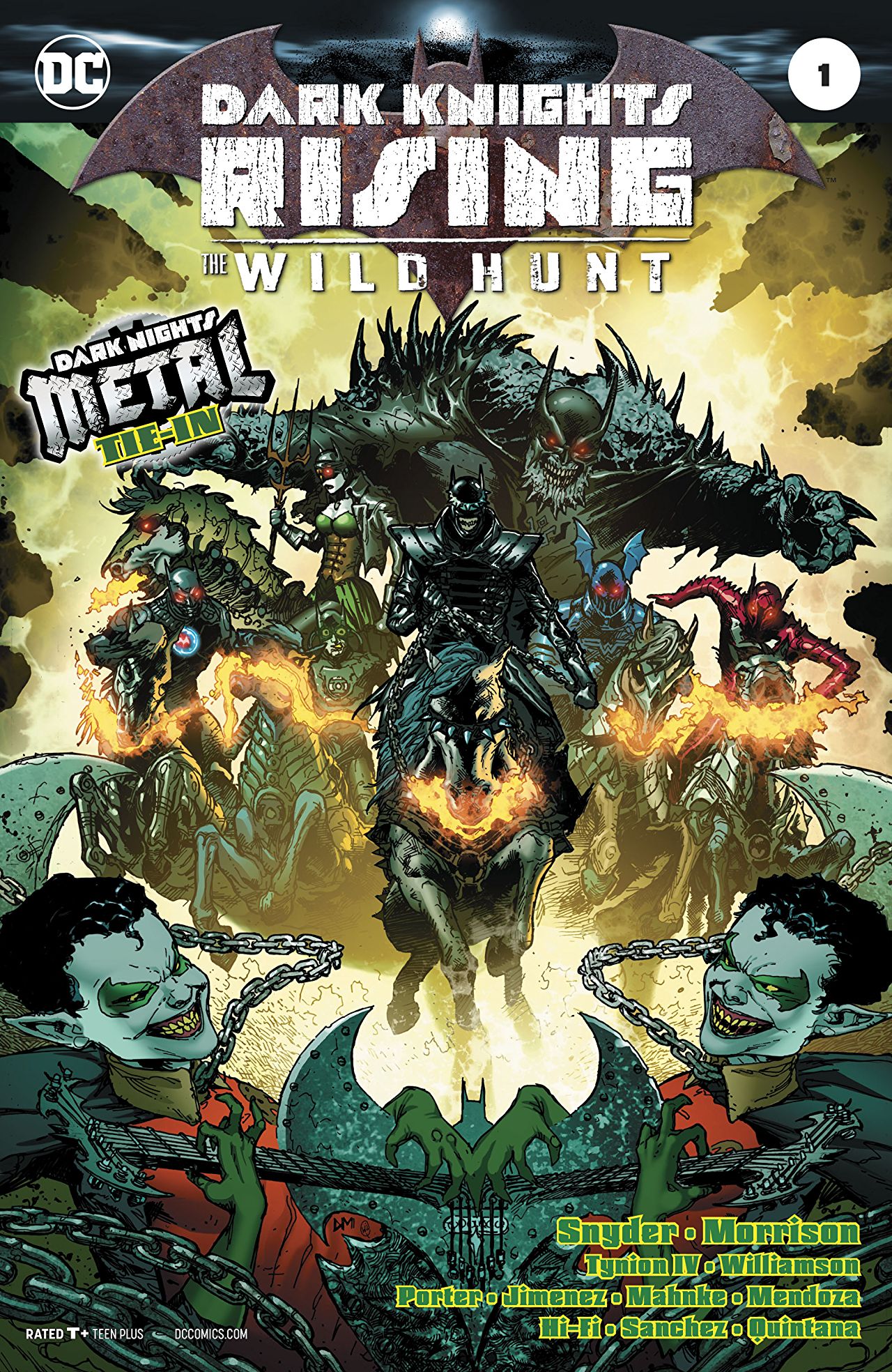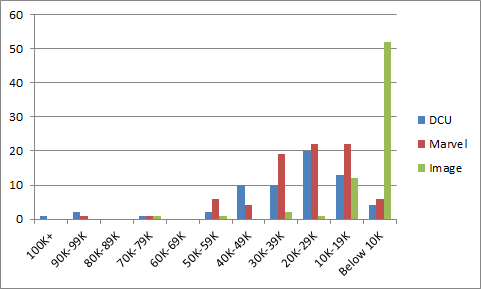And finally, the comparison chart of DC, Marvel and Image. So we can see where the biggest sales sit on the Direct Market Landscape.
Standard disclaimers: The numbers are based on the Diamond sales charts as estimated by the very reliable John Jackson Miller. These charts are pretty accurate for U.S. Direct Market sales with the following caveats: 1) you can add ~10% for UK sales, which are not reflected in these charts; 2) everyone’s best guess is you can add ~10% for digital sales – while some titles do sell significantly better in digital (*cough* Ms. Marvel *cough*), that’s the average rule of thumb; 3) it’s not going to include reorders from subsequent months, although reorders will show up in subsequent months if they’re high enough. So if you’re a monster seller in Southampton and it took the US audience 3 weeks to reorder, it’s probably not going to be reflected here.
What’s a sales band? It’s another way to have a higher level view of the market. The general idea is to divide the market into bands of 10K copies sold and see how many issues are in each band. How many issues sold between 90-99K copies, 80-89K copies, etc. etc. In very broad terms, the market is healthier when there are several titles selling in the 70K-100K+ range because titles that move a lot of copies give the retailers some margin of error on their ordering. When you see titles selling in the 20-29K band and especially below, there’s a pretty good chance a lot of retailers aren’t ordering those titles for the shelf (pull box/pre-order only) or minimal shelf copies at best.
How do things look? Not great. Only one issue of anything selling over 100K. Empty sales bands for the 80Ks and 60Ks.
It’s nice to see that not quite 100K blip for X-Men: Red, but we all know it’s moving down the chart a fair amount next month. It’s nice to see Image with a handful of titles selling 20K+, instead of just Walking Dead and Paper Girls.
It’s not nice to see most of the chart at 29K and below, though. Overall, Image adds to a bottom heavy chart, but it’s not quite the same thing, since fewer retailers order all their titles, so let’s switch the focus to DC and Marvel without those events, #1s and excessive stunts… and might actually be reliable or just sustainable.
As we usually say, throw out Batman and Star Wars and what you’re left with isn’t so very different. The quiet promise I spoke about in the DC and Marvel-specific chart speaks to incremental change. For DC, The Terrifics debuting well and looking like it should stay above 30K for at least a few issues. Ditto, The Brave & the Bold. For Marvel, the potential for X-Men: Red to migrate over the No Event chart somewhere in the 50K-59K band. Reorders and slightly upward activity on Avengers, Amazing Spider-Man and Thanos. The other X-Men titles creeping up a bit. And if this is really retailers playing catch up with reader demand, this could take a month or two for the charts to catch up. Ultimately, that’s a good thing.
The real change in product is coming in May/June/July. For March and April, the most that is reasonable to hope for is for some of the bleeding to stop and a few spots of isolated growth. And maybe we have a little of that. It just isn’t clear that any of what’s happening right now has the potential to jump up to 70K or 80K and have a real top list again, outside of Batman. Frankly, especially for Marvel, just nudging a couple titles past the 40K line would be a big deal… but the reorders show there’s some progress being made. And hopefully that’s enough for everyone to hang on until May and the new sales initiatives sell through.
Image is helping a few people with Saga returning from break and the Millarworld / Kick-Ass titles returning for another round (assuming they sell through). What the DM needs is more hits. It could probably settle for more titles selling around 40K each, where everyone can make a little money on them and not be overly worried if there’s not a total sellout. Of course, that might be the definition of a hit in February…
Want to learn more about how comics publishing and digital comics work? Try Todd’s book, Economics of Digital Comics









